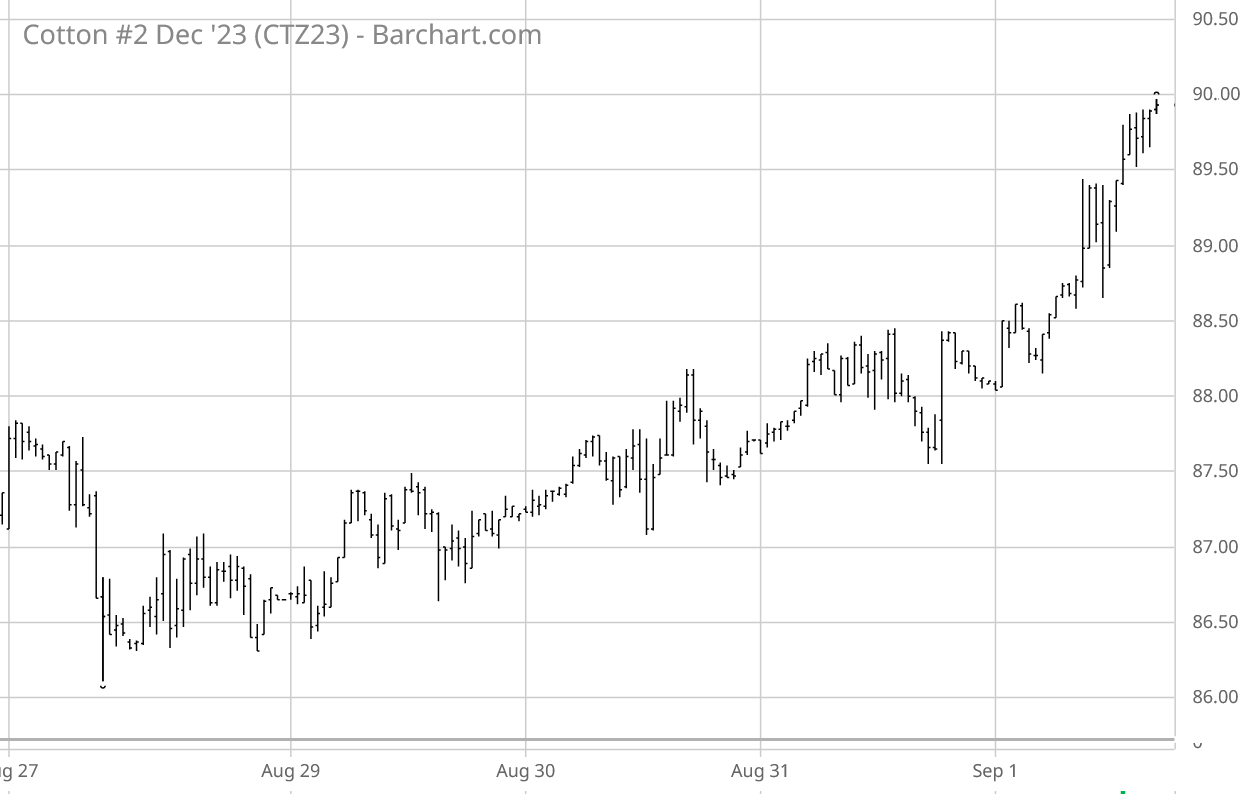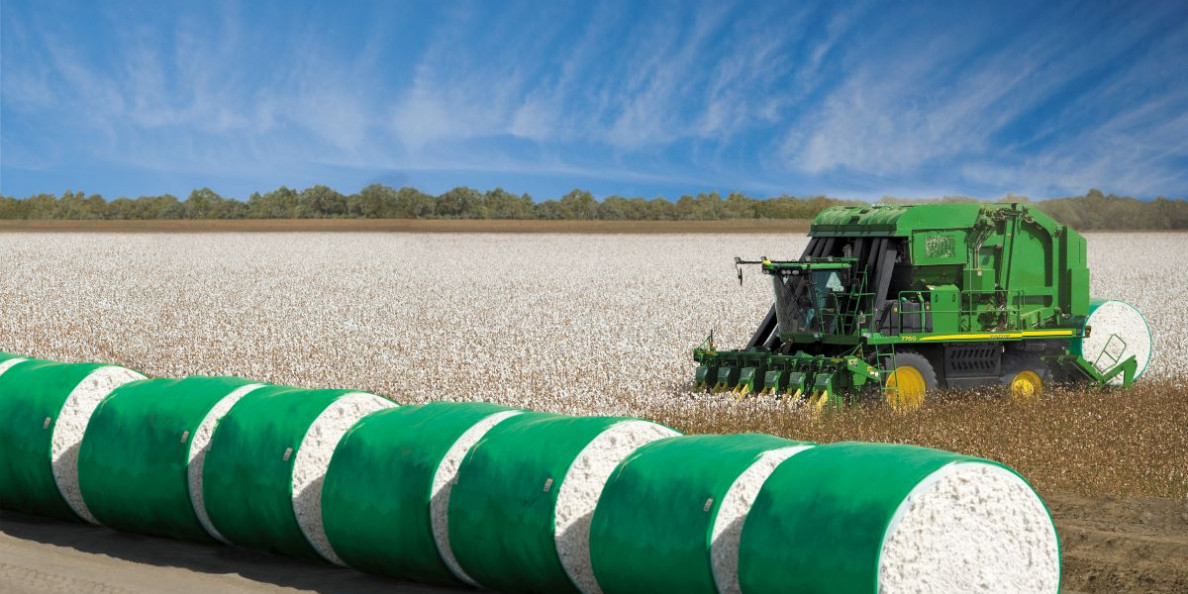For the week ending Friday, September 1, ICE cotton futures took a short bounce and then rose steadily towards 90 cents (see chart above courtesy of Barchart.com). The Dec’23 settled Friday up 2+ cents at 89.95 cents per pound. Chinese cotton prices trended higher for the second week in a row, as did A-Index of world cotton prices.
Other agricultural futures markets like CBOT corn, CBOT soybean, and KC wheat futures followed downtrends across the week. The U.S. dollar index followed a widely gyrating sideways pattern. Other macro influences (i.e., GDP, inflation, and interest rate policy) remain a potential headwind to longer term cotton demand. A recent example of this would be the global risk off selling due to the Chinese economic malaise during the week ending August 18.

Cotton-specific influences this week focused on potential damage within Hurricane Idalia’s path from Florida to the Carolinas. Texas and the mountain states received scattered showers, while the density and intensity of rain increased towards the eastern Gulf and Atlantic seaboard. The latest Texas regional summary continued to highlight the effects of hot and dry conditions (click here and scroll past the feature article). Looking back, the excess moisture in April/May had mixed effects in northwestern Texas, followed as it was by record heat. The resulting production uncertainty is still clouding the U.S. cotton supply/demand and market outcomes.
On the other side of the world, the southwest monsoon rains were relatively early in their complete coverage of India, albeit a bit below average in their early accumulation. July saw an intense flooding rains in northern India and Pakistan. Now the monsoon rainfall appears to be in a lull, with the major west central cotton growing regions showing a rainfall deficit. This maintains concerns about the impact of an historically dry August. Pakistan suffered crop damage from the excessive monsoon rains, and perhaps also from the more recent dryness. China’s main cotton producing region of Xinjiang had to deal with damaging temperature extremes while the rest of China has experienced both drought and floods. Meanwhile the U.S.’s two major export competitors in the southern hemisphere have been harvesting strong cotton crops this summer.
U.S. export sales continued weak for the third full week of the new marketing year (through August 24). Actual export shipments were below the needed weekly average pace, but this is seasonally normal. USDA’s weekly summary of the U.S. regional markets continued to reflect mixed spot physical trading activity and very light to moderate demand, across the U.S. regions.
ICE cotton futures open interest rose steadily across the week. In combination with higher ICE cotton settlements, this gave the appearance of new long positioning. Indeed, the regular snapshot of speculative positioning (through Tuesday, August 29) showed 5,681 more hedge fund longs, as well as a 4,388 fewer (covered) hedge fund shorts, week over week. The net long index fund position was barely changed compared to the previous Tuesday.
For more details and data on Old Crop and New Crop fundamentals, plus other near term influences, follow these links (or the drop-down menus above) to those sub-pages.


